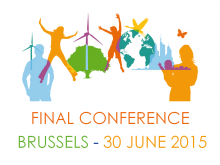As part of the CECILIA2050 project, three modelling approaches were employed to determine the pathways and implications of the ambitious emission reductions in the European Union, with two of the approaches linking developments in the EU with the rest of the world. This report draws together the key results from each of these broadly co-ordinated modelling exercises, compares and discusses key similarities and differences and draws out implications for the development of a low-carbon economy in the EU up until the year 2050.
Section 2 provides a description of the three modelling approaches, whilst Section 3 details the scenarios produced for assessment under each approach. Section 4 then compares the approaches and scenarios, to highlight key similarities and differences. Section 5 presents the key results of the key scenario, beginning with high-level results surrounding CO2 emissions, energy consumption, carbon prices and economic impacts, before describing and comparing sector-level results and implications. Section 6 concludes.
A full description of each modelling approach, scenario design and consequential results is presented in further detail in three dedicated reports. Each publication can be found on the CECILIA2050 project website:
Attachment:
Citation:
Funding:
Year of publication:
Number of pages:
Table of contents:
|
|
Executive summary |
4 |
|
1 |
Introduction |
7 |
|
2 |
Modelling Approaches |
8 |
|
2.1.1 |
European TIMES Model (ETM-UCL) |
8 |
|
2.1.2 |
Input-Output Model |
9 |
|
2.1.3 |
GINFORS Model |
9 |
|
3 |
Scenario Designs |
10 |
|
3.1 |
ETM-UCL Scenarios |
10 |
|
3.2 |
Input-Output Scenarios |
13 |
|
3.3 |
GINFORS Scenarios |
14 |
|
4 |
Key Similarities and Differences between Modelling Approaches and Scenario Designs |
15 |
|
5 |
Comparaison and Discussion of Key Results |
17 |
|
5.1 |
Power Sector |
23 |
|
5.2 |
Industry Sector |
26 |
|
5.3 |
Transport Sector |
27 |
|
5.4 |
Buildings Sector |
30 |
|
5.5 |
Agriculture Sector |
32 |
|
6 |
Conclusions |
32 |
|
7 |
Reference |
37 |


_Sectoral%20Scenarios%20for%20a%20Low-Carbon%20Europe_cover_0-itok=ih7h-Mcv.png)
